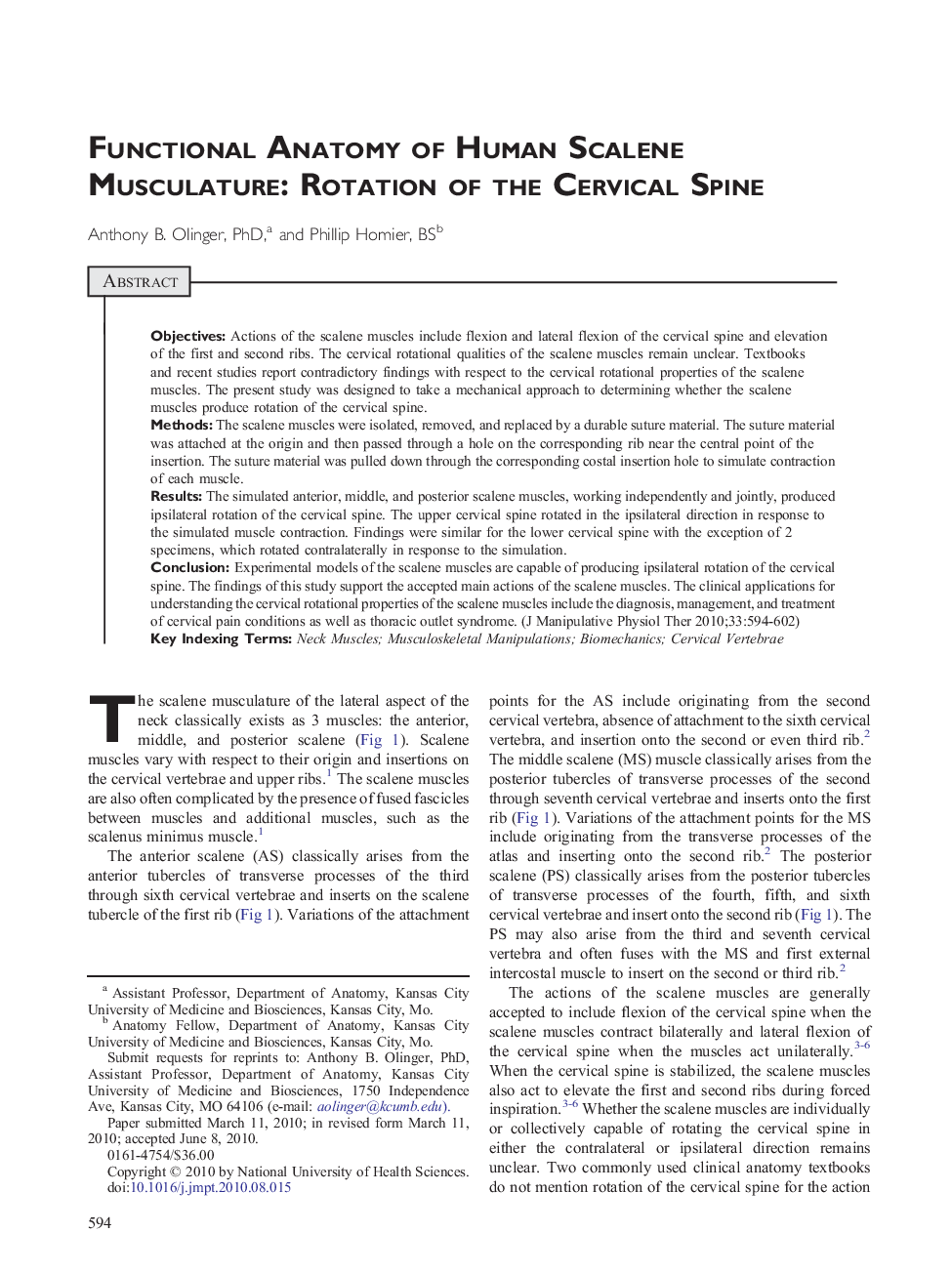| Article ID | Journal | Published Year | Pages | File Type |
|---|---|---|---|---|
| 2620658 | Journal of Manipulative and Physiological Therapeutics | 2010 | 9 Pages |
ObjectivesActions of the scalene muscles include flexion and lateral flexion of the cervical spine and elevation of the first and second ribs. The cervical rotational qualities of the scalene muscles remain unclear. Textbooks and recent studies report contradictory findings with respect to the cervical rotational properties of the scalene muscles. The present study was designed to take a mechanical approach to determining whether the scalene muscles produce rotation of the cervical spine.MethodsThe scalene muscles were isolated, removed, and replaced by a durable suture material. The suture material was attached at the origin and then passed through a hole on the corresponding rib near the central point of the insertion. The suture material was pulled down through the corresponding costal insertion hole to simulate contraction of each muscle.ResultsThe simulated anterior, middle, and posterior scalene muscles, working independently and jointly, produced ipsilateral rotation of the cervical spine. The upper cervical spine rotated in the ipsilateral direction in response to the simulated muscle contraction. Findings were similar for the lower cervical spine with the exception of 2 specimens, which rotated contralaterally in response to the simulation.ConclusionExperimental models of the scalene muscles are capable of producing ipsilateral rotation of the cervical spine. The findings of this study support the accepted main actions of the scalene muscles. The clinical applications for understanding the cervical rotational properties of the scalene muscles include the diagnosis, management, and treatment of cervical pain conditions as well as thoracic outlet syndrome.
